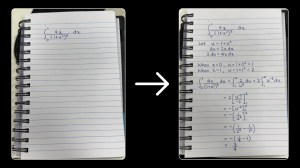Save the Sainik School
It serves an important national cause and should be given every possible support.

Post-Independence, the officer cadre of the Indian Armed Forces lacked a grassroots ethos and needed to be ‘Indianised’. Since public schools were beyond most, then defence minister, V.K. Krishna Menon, envisioned Sainik Schools in 1960. The idea was to set up at least one school in each state to select boys from across the spectrum through an open entrance examination and train them for leadership in the forces.
Sainik Schools were modelled on public schools minus the vainglory. The syllabus-examination approach was also cast aside. They aimed at all-round development to enhance competitive and survival skills, and foster personality development. To ensure that promising boys from economically backward strata joined the school, states were mandated to provide scholarships. Given their background, these students were also expected to identify themselves with the men they command — the sine qua non of military leadership. Sainik Schools would thus serve as feeders to the National Defence Academy and the three Service Academies.
Did it work? You bet. Remember how the young officers led their troops upfront, uphill, undauntedly through the cannonade to recapture the Kargil massifs? But even as Sainik Schools were rejoicing at the elevation of one of its students, General Deepak Kapoor, as army chief, they had been fighting a grim battle for survival. The state governments handed out scholarships to indigent students, depending on parents’ income. Twenty years ago, the total charges of a student were approximately Rs 11,000, of which the fee component was Rs 5,500. By 1997, this rose to Rs 27,000, roughly half of it being the fee. This year the parents had to fork out Rs 60,000, with the fee touching 40 grand. The academic year 2000-01 delivered a double whammy: one, the board decided to jack up the fee by 10 per cent every year; two, the majority of states resolved not to underwrite the hike in the fees of those earning scholarships.
Unlike other government schools, the salary and pension of teachers and staff are not borne by the government; it is met from consolidated fees and bursaries. Given the steep rise in the fees, Sainik Schools, once extolled as the Poor Man’s Public Schools, have become unaffordable for the poor man!
True, good education comes at a price. But Sainik Schools were devised to serve a national cause. So is there a way out? There are 22 Sainik Schools, and the average bill for each school is approximately Rs 1 crore. The defence budget for the year 2007-08 is Rs 96,000 crore — 22 crore is a mere 0.023 per cent of this. If the Centre picks up this tab, it would lift the burden from the shoulders of the parents by about a third.
The defence minister himself must take the call. Letting national assets like the Sainik Schools go to seed will be unpardonable self-destruction.






- 01
- 02
- 03
- 04
- 05

























